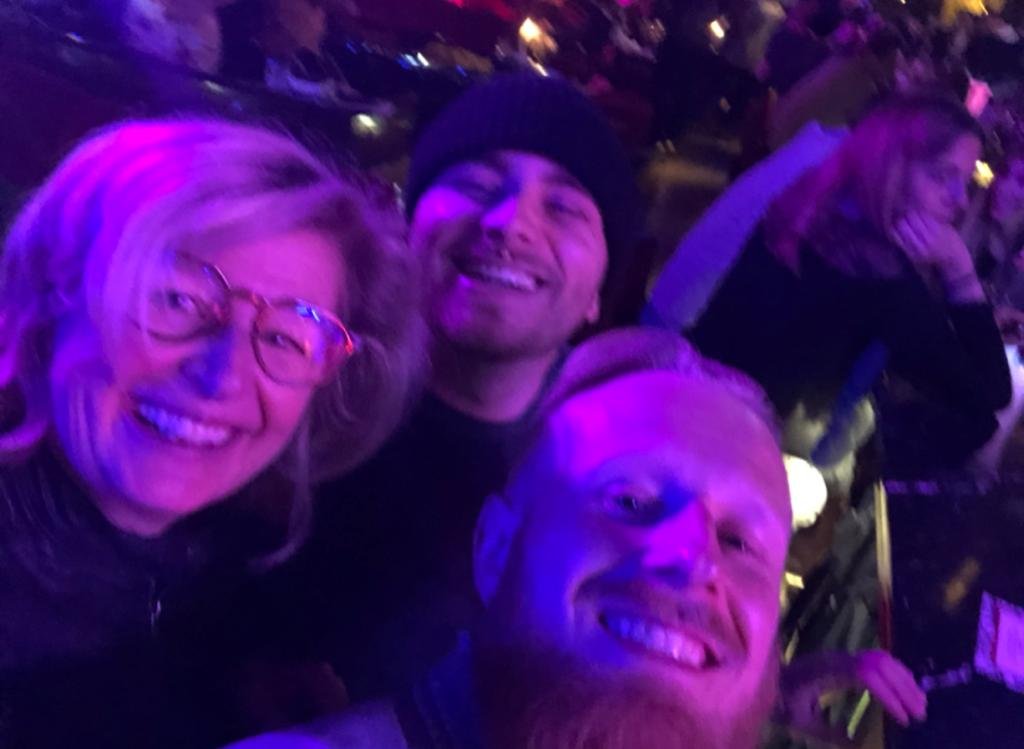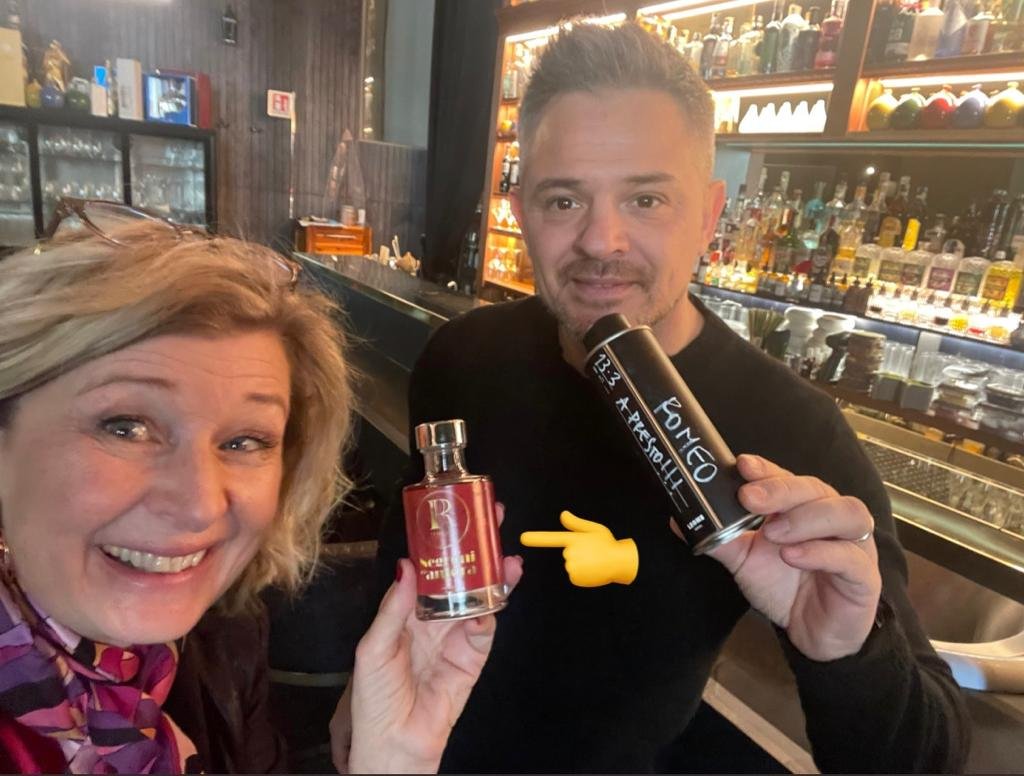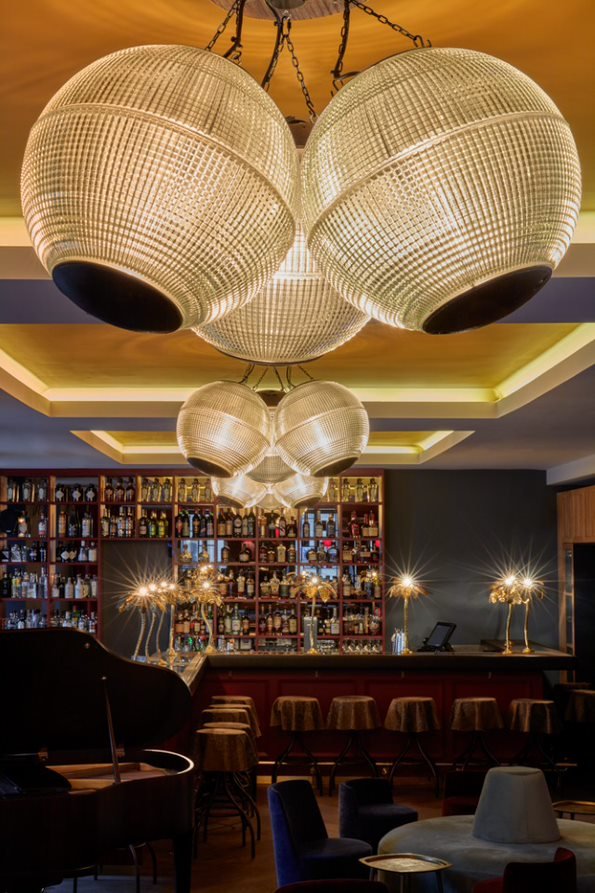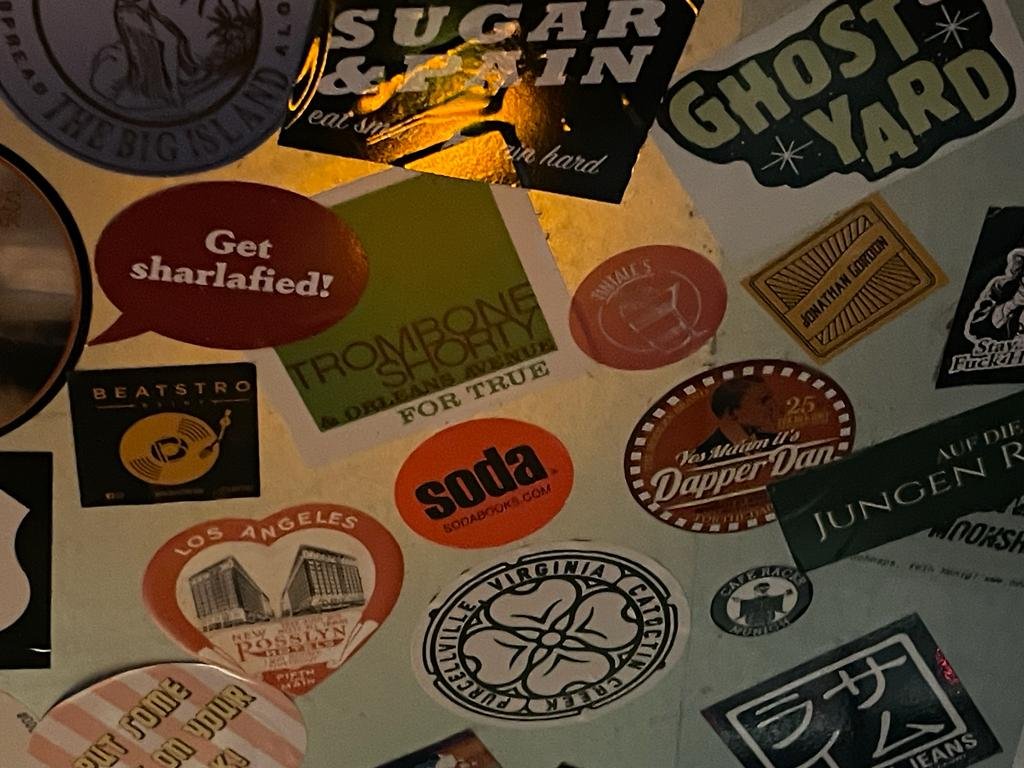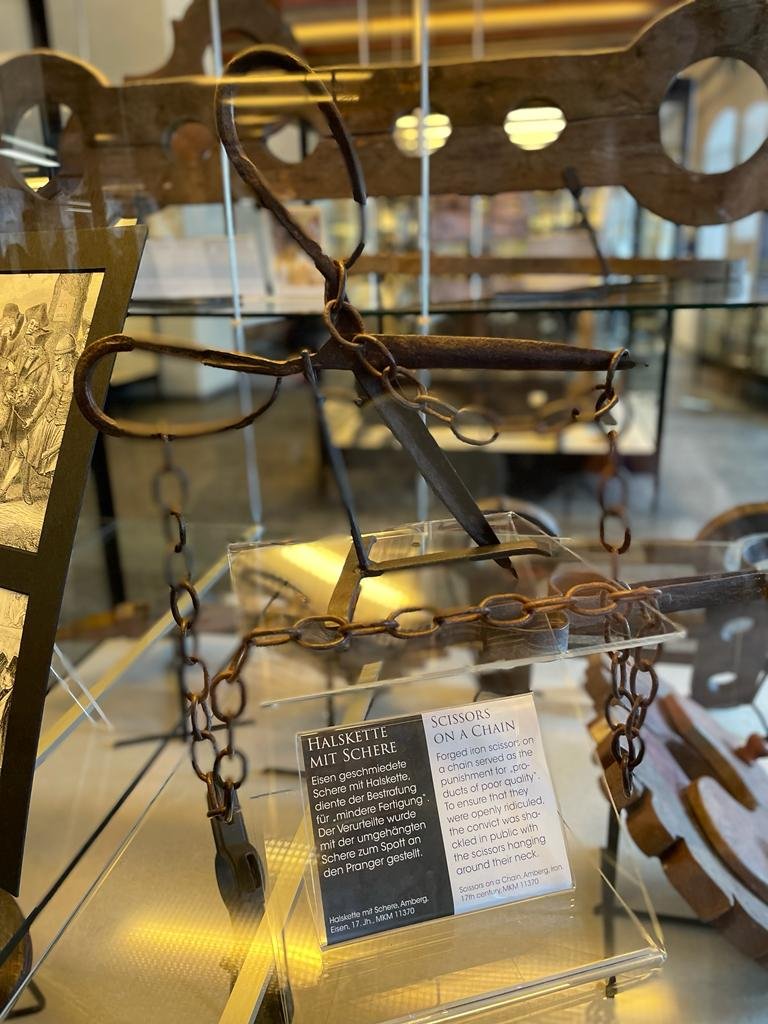The Sharlafied Love Train Diaries
Four countries, 17 days, so many recollections… Here is my recap of my marathon trip throughout northern Europe on the journey I call the Sharlafied Love Train.
Look at this cool poster my friend Matteo Coppo made for me!
How it all started
I met Simon Kistenfeger at BCB in Berlin, and bumped into him again at the Athens Bar Show. After a night of fun in Athens with people from all over the world, I knew I was going to see Simon again. He invited me to a benefit event called Running Dinner to raise money for women in Afghanistan.
Getting to Rothenburg ob der Tauber is tricky, involving a few trains, so I thought, why not do a tour by train throughout northern Europe…
and the Sharlafied Love Train was born.
Verona
March 13. First stop, by train to Verona, where I stayed in the petite and delightful Relais Della Locanda in a lovely room with a glassed-in sun terrace. After an interview with Andrea Cason at Romeo for a future interview, I brought two boomerang cocktails made by Edo at Danieli in Bassano del Grappa, which I exchanged for Andrea’s amphora-aged Negroni and Martini cocktails. Then it was time to visit a few other bars, like Amaro. Hey Matteo Scaravelli, thanks for the shot of Volume Primo vermouth.
Relais Della Locanda in Verona.
Exchanging boomerangs in Verona.
Next stop was Archivio. Shoutout to Giacomo Merlin and Andrea Barboni, alias Barabbath, visiting from The Soda Jerk. Then dinner with Emanuele from Amàrico, his lovely wife Guenda and Marta from Relais Rossar, a boutique hotel in the Verona hills ready to reopen in April. We had a wonderful Peruvian/Puglian/Japanese fusion meal at InKa where Giacomo Berti served up amazing Pisco sours for us.
They love to do cocktail pairing here. The home chef is Gabriel Zevallos Cabello who makes this drool-worthy dish called Tacu Chaufa!
I also had an interesting talk with guest chef Vito Catucci from Piano - Susci Italiano near Bari. He uses locally sourced foods to create an Italian version of sushi (note the Italian spelling “susci”) The dishes were to die for!
Munich
The view changing as I travel north toward Munich.
March 14. Now, time to get on the train for Munich, a place I have visited before, but never for the cocktail bar scene. My two nights were at the 25 Hours Hotel.
Neni, the breakfast restaurant at 25 Hours hotel.
This place is so cool: the rooms are quirky and fun and the bar is called Boilerman, a concept masterminded by Jörg Meyer based around highballs, so called because, during the time of steam locomotives, drinks were served in tall glasses. Highballing is when the engine would pick up speed, a little ball would show the pressure on the boiler gauge. The name Boilerman plays on this theme. I spoke to bartender Marvin Jacob who told me a bit about his background. Stay tuned for the upcoming interview!
The Boilerman.
The cocktail scene has made great strides in recent years, and of course the best known cocktail bar is Schumann’s. This place is the height of elegance and it is one of Munich natives’ favorite spots both for its cocktails and for its hearty, traditional food, all at reasonable prices. I spoke to Xavier and Max; Max made me a boomerang “light Negroni”, which is how Charles Schumann himself prefers it. Schumann is an enigmatic character; I passed him at the door on my way out through the Camparino bar where he stood as a quiet sentinel.
The Journalist cocktail at Schumann’s.
Schumman’s Light Negroni.
Next stop was Barroom, a tiny, 10-seat old-style bar where Emanuele is the owner and host. We spoke amicably in Italian the whole time, while old time jazz music played in the background. The drinks list is classic and very well done. A couple of guys walked in and were seated near me; it was easy to strike up a conversation and after another drink we were off together to visit—surprise—the Negroni Bar. Another Italian, Federico from Turin, served up a variety of Negronis for our imbibing pleasure. Time to call it a night, I have a big day ahead tomorrow.
The Negroni Bar.
March 15. My night started out at Little Wolf for some good old American style ribs. A step out of vintage USA, this place is owned by ZumWolfBar, known for its huge selection of whiskies. The baby back ribs were finger licking good and now my tummy was primed for the evening. I met bearded Flo, who gave me a sip of one of their best aged bourbons. I was meant to meet owner Wolfie later, but I didn’t make it back. Next time, Wolfie!
The Sharlafied sticker at Little Wolf.
With Flo at ZumWolfBar.
The next spot I hit was Trisoux Bar. This is a place with a lot more lurking beneath the surface. The first impact is the design: a friend of the owners created a truly unique work of art with wood beams.
The name comes from the three owners who chose a riff on the French word for kiss, bisous, making it into a kiss for three. The place was once a gay bar for men only; I found it interesting that my bartender Laura was a woman, and every guest inside at that moment was female. Her colleague Frank took me downstairs to the private bar Glory. I don’t want to ruin the surprise, so I won’t tell you what is behind the velvet curtain down there.
Auroom was my next stop—Alex opened this place 12 years ago. He made me a cocktail using his homemade pandan syrup. He burns the leaves before infusing them to impart more flavor to his syrup. I tasted the syrup straight and it tastes like a mix of hot buttered popcorn, pancakes and love. Next stop was Zephyr. The successful bar opened 12 years ago. I spoke to Jacob, who is proud of their fruit based drinks and unusual ingredients like rose water, cold brew socha tea and butter. We also did a sticker exchange.
The High, whose slogans are Drop by and get high, and Drink our balls (as in highballs), is a buzzy place with a long busy bar. The menu is on a cool orange piece of plexiglas and, aside from the long list of highballs, offers a shot of mint and olive oil slushy.
The menu at The High.
Max met me at Ménage and the feeling was like a Japanese sushi restaurant, with an abundance of blonde wood. It turns out that the bar was designed by an architect, and there is nothing Japanese about the theme here. Imaginative food gets top billing with cocktails, and you can eat small plates while you imbibe.
Pacific Times is a super classic bar, an institution for 25 years. Every month they create a cocktail menu on a theme, and April will be the 25th anniversary month featuring champagne in their cocktail list, and by the glass.
Bar Garçon is a stripped down and sleek bar that plays vinyls while you taste your cocktail. Alex can make anything you heart desires, and I was delighted to see a range of Nardini products from my hometown here. I had a highball with a non alcoholic herbal hibiscus bitter from Berlin producer Dr. Jaglas.
My last stop was a bar that everyone put on its “must visit” list: Bar Gabányi.
Stefan Gabányi.
There I met Stefan Gabányi, the proprietor. This man is quite the character with his long grey hair and bushy sideburns. He was the head bartender at Schumann’s for many years and has had his own bar since 2018. It is located in an ancient villa and the room is dark, cozy, and extremely large. You can also get food, and his goulash, which I could not resist tasting, is legendary. I ordered a Virgin Mary (you can’t drink alcohol everywhere) and the young woman bartender showed extreme care in her preparation, perhaps because Stefan was sitting beside me. As she prepared the glass with ice, I thought to myself…”I wish I had asked for it without ice, but anyway….” It turned out she was just chilling my glass and she served me a strained bloody Mary, telling me that it would not be extremely spicy because this is the classic way. Talk about mind reading! Therein I began a discussion with Stefan about many things. Fast forward to 1:30 am. Stefan hands me a copy of his book “Schumann’s Whisk(e)y Lexicon”, all 575 pages of it, dedicated to me and signed. I am sure his memory holds many secrets from his years behind the bar and I am hell-bent to find out more. Stay tuned.
My copy of the Whisk(e)y Lexicon.
Rothenburg ob den Tauber
March 16. This is the reason for my whole trip, I had to take two trains from Munich to get to Rothenburg ob den Tauber, a fairytale town, probably the most photographed place in all of Europe.
The beautiful Rothenburg.
Simon organized a stay for me at the Mittermeier Alter Ego Hotel which looks like a Bavarian home on the outside, but inside looks like a New York City loft. The entry has a sleek communal kitchen with a lot of natural wood where you can prepare a meal among friends.
With Naghi at Mucho Amor.
My first stop was Mucho Amor, where I met Naghi and had a welcome drink. I spent my first day discovering the town, I had a typical meal in Katstube, owned by the Moretti family for generations. The Franconian sausages and potato salad were delicious! I ended the night at Better Together, the new entry in the Mucho Amor family, where they were winding down after the first evening of the Running Dinner. My chance will be tomorrow! The idea of the running dinner is to raise awareness about the culinary offering of the city as well as to raise money for the women of Afghanistan. Simon is continually thinking of ways to help people from disadvantaged countries: read more about it here.
March 17. I had breakfast next door at Villa Mittermeier, the main hotel and gourmet restaurant. Here the rooms are all individually decorated in an original style. The showpiece for me was the huge chandelier they purchased in Hamburg—it was made from discarded fragments of mostly clear material, parts of lightbulb, scouring pad, a plastic bottle neck… It was astounding!
Then I set off to discover the city and Robert at the tourist office was able to score me a visit to the town’s tallest tower which was officially closed. The hundreds of narrow steps led to an open-air lookout where the entire city unfolded before us.
The view of Rothenburg. Thanks, Robert!
Robert took me on a walk around the city and noted that the town had many family-owned businesses. For this reason, during Covid, most survived. Christmas is an important period for Rothenburg, and the Käthe Wohlfahrt Christmas shop attracts visitors all year round. I visited the Criminal Museum which showed how justice was meted out in medieval times. On display were public humiliation punishments like a heavy rosary bead necklace to wear in the town square, a scissor necklace, worn as a punishment for producing shoddy goods, and a chastity belt, which was actually used to prevent rape, not to guarantee fidelity.
The evening event started at Better Together, where I was paired with the affable Gaby to go on our all-vegetarian running dinner. Our appetizer was an herbal “cheese” spread and a “pâté” made with kidney beans, paired with a cocktail featuring Altos tequila. So good! The next stop was to Villa Mittermeier where we enjoyed a haute cuisine plate with a roasted carrot in sauce. Done to perfection.
The roasted carrot.
The third stop was to Reichsküchenmeister, where we had a hearty plate with vegetarian stuffed cabbage leaf. Our dessert was at Landwehrbräu am Turm, an old traditional tavern that was taken over by a group of young and enthusiastic entrepreneurs.
After dinner, Gaby led me up the stone steps to the city wall which circles the entire town, and is completely covered with a wooden roof. It was kind of spooky but very cool to walk under the narrow covered passageway with only our phone flashlights to light the way.
March 16. Today Simon joined me with our animated guide Andrea who gave a tour of the town, explaining its development since the 900s. Every corner was postcard-perfect. The legend of the clock tower in the main square tells how, back in the 1600s during the Thirty years’ war, Mayor Nusch was able to save the town from destruction by Count Tilly by downing a 3.25 liter mug of wine in one gulp.
Touring Rothenburg with Simon and Andrea.
Every hour, the two windows of the tower open and replicas of Tilly and Nusch pop out to reenact the event. She explained the plight of the Jewish population which began with the pogroms in the 1100s, centuries before the Holocaust. We also made a stop to Simon’s family home to have a coffee and admire his mother’s original garden wonderland, followed by a piece of her homemade cake at Mucho Amor.
The wonderland at Simon’s family home.
In the garden with Simon’s mother Hilde.

